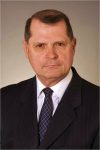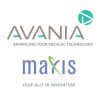Although we utilize mono, bi-polar and ultrasound energy quite a bit, we don’t take the time to notice that this realm, where physics and biology meet, is the future of medicine. Most surgeons use what is now offered (such as coagulation or cutting tissue) and don’t think about it much, or they don’t truly understand how the different forms of energy work. Scientists have discovered that specific frequencies of energy (light, ultrasound, microwave, etc.) can penetrate through tissues (such as x-rays, but without harmful radiation). By precisely choosing the frequency and power of energy (directed energy), it is possible to use the energy to make a diagnosis (e.g., spectroscopy) or perform a therapy (e.g., ablation), and this can be done instantaneously at the cellular or molecular level using a single instrument. This is referred to as directed energy for diagnosis or therapy (DEDAT). It can be difficult to relate to, but as energy becomes a leading-edge technology, non-invasive surgery becomes a reality and a powerful option in our tool belt as surgeons. During board and committee meetings, as well as during the annual Minimally Invasive Surgery (MIS) week, members of the Society of Laparoendoscopic Surgery (SLS) have been discussing how to present energy technology to scientists and surgeons in a way that summarizes its importance to the future of medicine.
Using specific frequencies of ultrasound, light, microwaves, etc. to operate is known, and companies are developing new technology around MRI and high-intensity focused ultrasound (HIFU). The future of operating via light (bio-photonics) comes from the knowledge that you can care for patients through molecular biology on the cellular level. This is what energy does—it can turn on and off individual molecules—it can accelerate or inhibit the cell’s function. This is also the way drugs work, by turning on and off individual molecules. Now the surgeon can do this.
Using Critical History to Develop Handheld Devices
Everything in life depends on the movement of energy. Ultrasound has been extensively used in medicine and industry since World War II. Then, in 1959, in his famous talk at Cal Tech to the American Physical Society, Richard Feynman predicted that future technology is at the atomic and molecular level. This gave us the foundation for building and repairing via cell manipulation. Today we use it via ultrasound imaging, Doppler imaging, lithotripsy, sonophoresis, photonics, biomodulation, gene therapy, bone healing, drug delivery, peripheral nerve blocking and tissue ablation.1 We’ve learned fairly recently that HIFU can kill cancer cells. But lately, handheld instruments that can tell us quite a bit about the cell and even its chemical content have been invented. In the past we had no instruments, but today they are available, with the military and private innovators around the world studying and using energy for medical use. They know you can focus a light and stop the bleeding.2 Neuroscientists champion minimally invasive techniques, but they also know that although procedures are less invasive, there are drawbacks to even small incisions. Now neuroscience is realizing that low-intensity focused ultrasound and photobiomodulation can help deal with these deficiencies. As you adjust the intensity, you have more control to prevent injury and apply the amount of energy that each operation needs.
Sound produces a mechanical wave in the form of molecular vibrations, which transmits energy in a directed format. Ultrasound is a term used for the sound waves, which are broadcast higher than what the human ear can hear. In the brain, ultrasound is used to open the blood barriers to administer drugs. We are controlling tumor growth this way—for example, we are researching its use with myomas in gynecology.
The Future
The future lies in the devices that will revolutionize surgery, with non-invasive surgery and molecular energy operations. But like all new movements in medicine, training is key. That is why SLS wants to begin the discussion around energy medicine now—to prepare to show how these commonly used energy sources in surgery help us understand how the new energy technology is producing success in medicine, as well as recognizing its limitations, and what is in store for us. Because thorough training is key to successful surgeries, we need to know how and why energy works; we need to appreciate energy. This begins with the basics, which we will discuss during our next annual meeting, as well as the exciting future in energy medicine.
The energy movement will begin treating diseases in solid organs. Image-guided surgery is the stepping stone. It is the “half-way” marker to energy medicine. And we aren’t far off—we are already creating the standards and collecting the necessary data. As we move forward, energy medicine’s acceptance is the next step.
Energy medicine will evolve, despite fears and prejudices. Just as laparoscopy and robotic surgery had a steep hill to climb in terms of acceptance, so too will DEDAT go through a transitional period in the field of surgery. The public demands progress. If you recall, in the early 60s and 70s the progress in laparoscopy was affected by doubt and transition. The first reports of its use and its complication rates by those who championed the new technology were then challenged when the new technique became more popular among those who didn’t have the experience, and that led to a higher incidence of adverse consequences. But as surgeons accepted the training and became familiar, and the technology became more precise, there was a turning point, and the benefits of laparoscopic surgery were fully realized. The same is happening in robotics. Healthy skepticism has led to better training, improved fundamentals and now greater acceptance.
Again, the patient always leads the movement. If, given the choice, patients are offered surgical holes in the body vs. shining a light, they will choose energy. If they are presented with slight pain vs. no pain, they will choose no pain. If they are given the choice of a two- to three-hour procedure or a 10- to 15-minute procedure, they will choose the more efficient form of healing. Shall I cut you or shall I shine light on you? This question is not far away.
At this point we are predicting that molecular energy and ultrasound will not replace all surgeries. We know it works for the reduction of solid tumors and other gynecological and neurological problems, but we are further out in the progress in other areas of medicine. We will have delay after delay because history tells us that with progress there is resistance. The cycle included the invention of laparoscopic surgery, the resistance against laparoscopics, and then the public’s demand for minimally invasive surgery. And what happened? We delivered a better surgery.
A Turning Point
As of right now scientists are using DEDAT to demonstrate great advances. The evidence is mounting. We will realize that once the public understands the way in which science is moving they will demand better and better surgery, less risk, less pain and more convenience.
We will realize that the human hand can only do so much.
Richard Satava, M.D. is a member of the board of the Society of Laparoendoscopic Surgeons. The energy session referred to in this column will be held during MIS Week in San Francisco in September 2017.
References
- Rezayat, E. and Toostani, I.G. (2016). A Review on Brain Stimulation Using Low Intensity Focused Ultrasound. Basic Clin Neurosci. 7(3): 187–194. Retrieved from https://www.ncbi.nlm.nih.gov/pmc/articles/PMC4981830/.
- Vaezy, S., et al. (March 1999). Use of high-intensity focused ultrasound to control bleeding. Journal of Vascular Surgery. 29(3): 533–542. Retrieved from http://www.sciencedirect.com/science/article/pii/S074152149970282X







